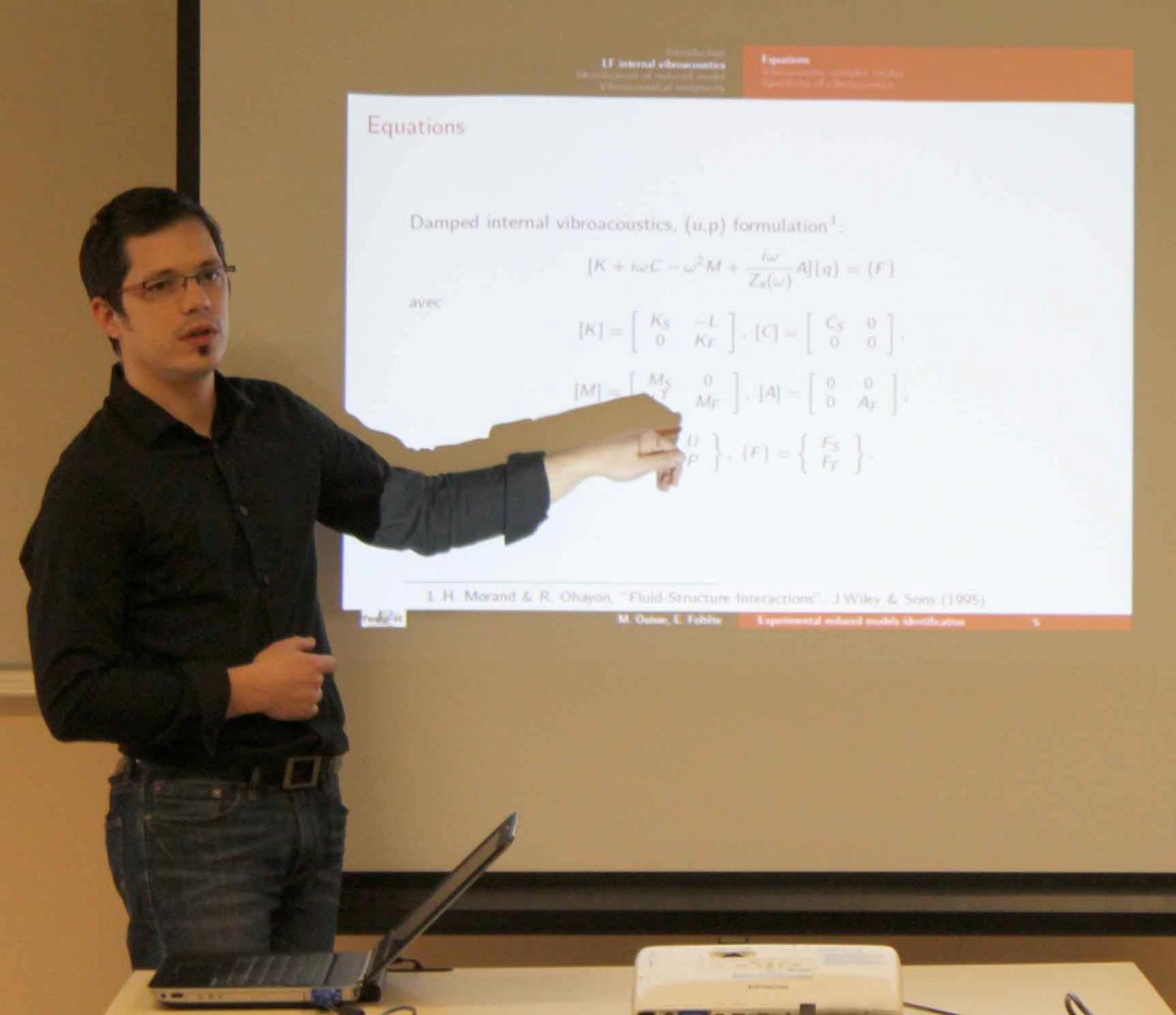Identification de modèles réduits expérimentaux en vibroacoustique
Au LMSSC, Cnam, Paris, le 7 février 2014 à 15H
Morvan Ouisse
Professeur, École Nationale Supérieure de Mécanique et des Microtechniques (ENSMM), Besançon, France
Directeur adjoint du département Mécanique Appliquée (Méc'Appli), Institut FEMTO-ST

In the field of structural experimental modal analysis, the identification of reduced models is classically done by using complex modes. The reduced model can be interpreted as a physical one when the identified mode shapes verify the so-called properness condition. The extension of this property to the case of vibro-acoustic modal analysis is presented here.
Starting from identified modes that do not verify it, the shapes must be slightly modified in order to correspond to a physical model with a behaviour which is as close as possible to the identified one. The mathematical problem that should be solved is a constrained minimisation problem which has an analytical solution in the case of in-vacuo structure. In the case of vibro-acoustic coupling, a nonlinear matricial problem has to be solved. Its full resolution requires some costly algorithms which are not efficient compared with the constrained minimisation initial problem. Some simplified procedures to approximate the solutions have been developed and applied to several test-cases. Among the ways allowing improvements of the methodology, the viboacoustical reciprocity properties are investigated to take advantage of mechano-acoustical excitations. The methodology is tested on a numerical test-case, and experimental validations are finally exhibited.
